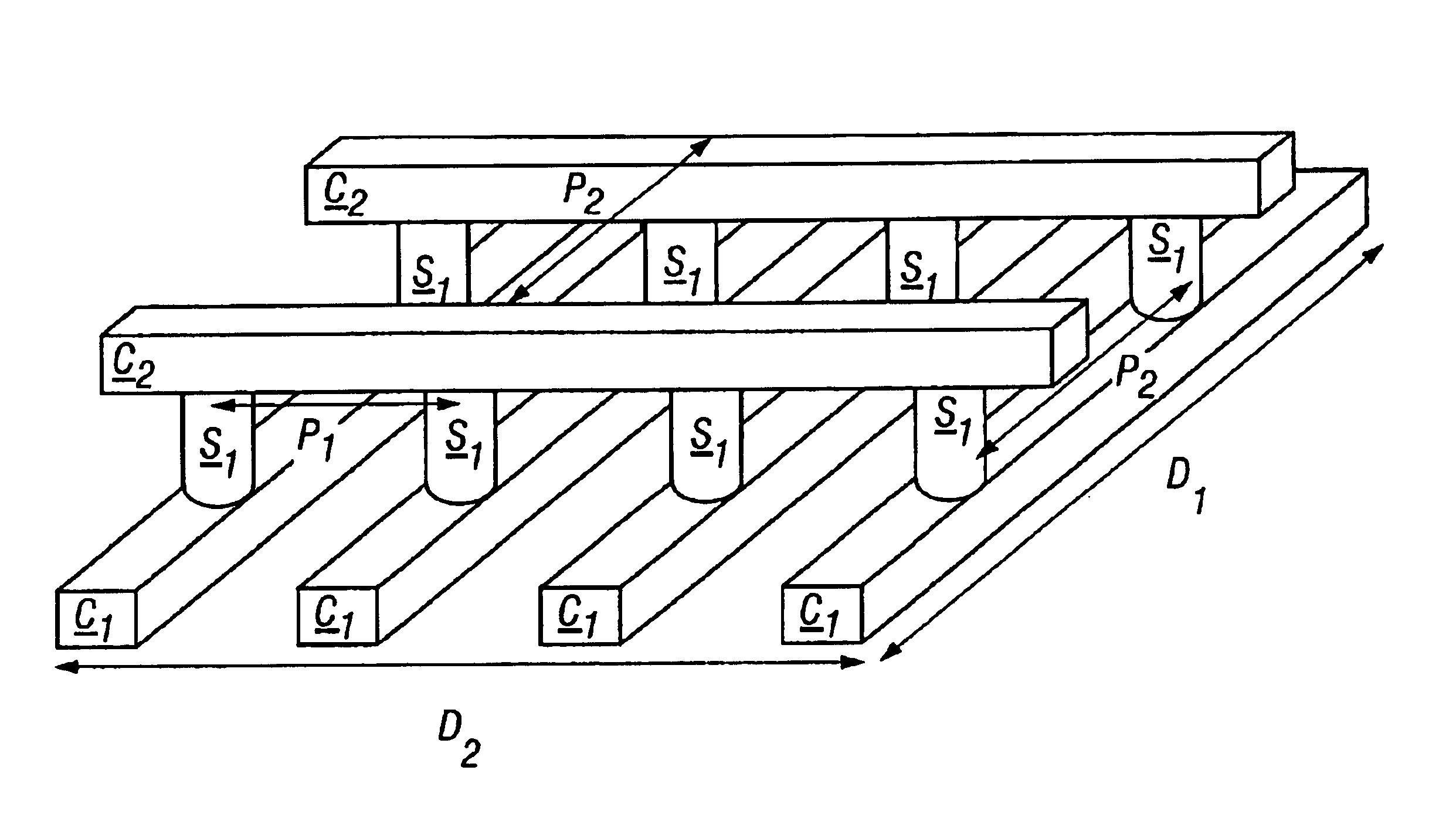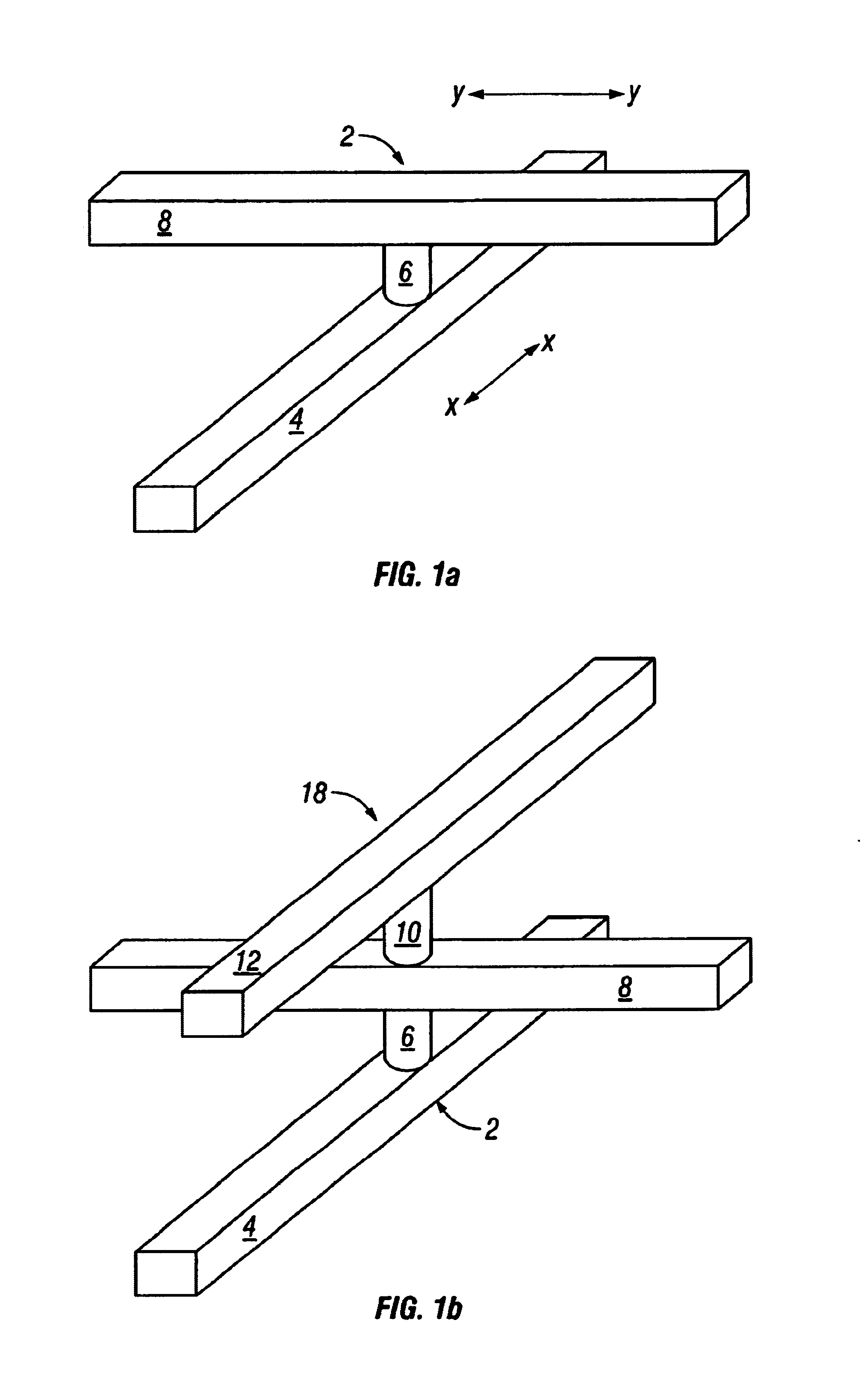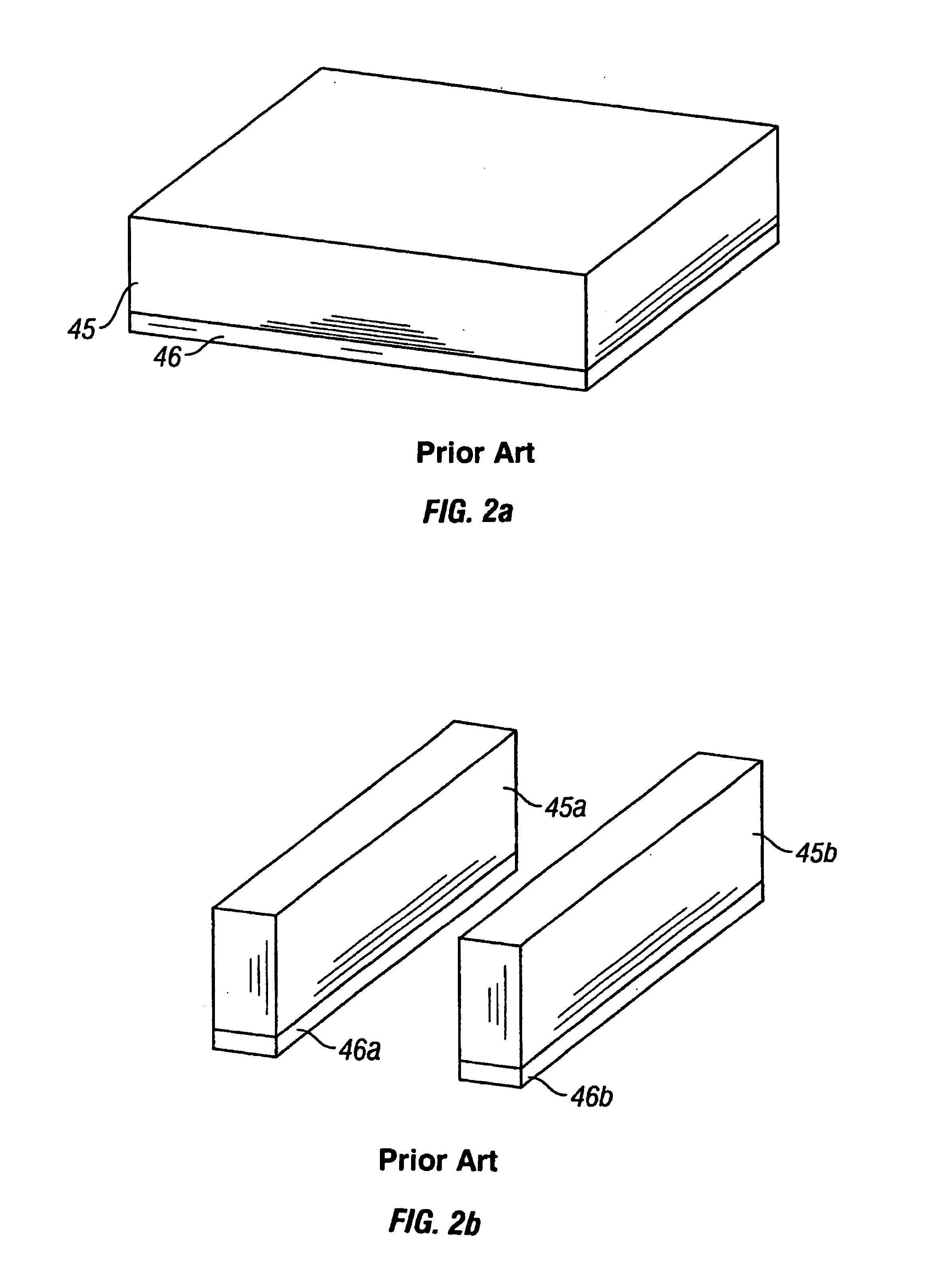Method for making high density nonvolatile memory
a nonvolatile memory and high density technology, applied in the field of high density nonvolatile memory, can solve the problems of increasing density, increasing the cost of substrate, and continual efforts to fabricate more circuitry, so as to reduce the feature size and height of portions of memory cells, and improve density
- Summary
- Abstract
- Description
- Claims
- Application Information
AI Technical Summary
Benefits of technology
Problems solved by technology
Method used
Image
Examples
Embodiment Construction
[0023]Johnson et al. and Knall et al. both disclose monolithic three dimensional memories which provide for high density memory arrays. The present invention provides for creation of a monolithic three dimensional memory with a structure similar to those disclosed in Johnson et al., but uses a different method of fabrication and different choice of materials, allowing for improved density, performance, and ease of manufacture.
[0024]The structure of a single memory cell 2 of the present invention is illustrated in FIG. 1a. At the bottom is conductor 4. Above conductor 4 is semiconductor element 6, and above that is conductor 8. In the present invention, semiconductor element 6 is substantially cylindrical, for reasons that will be described below. The memory cell of Johnson et al. has a similar structure, but its semiconductor element, called a pillar, is not substantially cylindrical. Turning to FIG. 1b, in both the memory of Johnson et al. and the present invention, another semicon...
PUM
 Login to View More
Login to View More Abstract
Description
Claims
Application Information
 Login to View More
Login to View More - R&D
- Intellectual Property
- Life Sciences
- Materials
- Tech Scout
- Unparalleled Data Quality
- Higher Quality Content
- 60% Fewer Hallucinations
Browse by: Latest US Patents, China's latest patents, Technical Efficacy Thesaurus, Application Domain, Technology Topic, Popular Technical Reports.
© 2025 PatSnap. All rights reserved.Legal|Privacy policy|Modern Slavery Act Transparency Statement|Sitemap|About US| Contact US: help@patsnap.com



